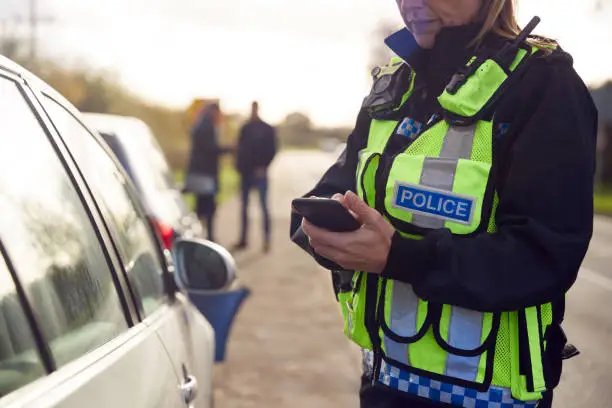- How to Complete RTA Vehicle Transfer in 5 Simple Steps
- Common Mistakes to Avoid During Vehicle Transfer
- Understanding Post-Transfer Responsibilities
- FAQ
Thinking about selling your car or buying a used one? Understanding the RTA vehicle transfer process is key to a smooth change of ownership. This guide breaks down everything you need to know, from paperwork to payments, ensuring you navigate the steps easily.
How to Complete RTA Vehicle Transfer in 5 Simple Steps
Transferring car ownership does not have to be confusing. By following these clear steps, anyone can complete an RTA vehicle transfer successfully and without hassle. Get ready to hand over the keys or begin your new journey as a car owner.
Step 1:Prepare Required Documents
Before you start anything, gather all the necessary paperwork. Missing even one document can cause delays. Make sure these are valid and up-to-date:
Original Vehicle Registration Card: This is also known as the Mulkiya or car ownership certificate. It proves who currently owns the car. You absolutely need the original card to transfer ownership.
Valid ID Copies for Buyer and Seller: Both the person selling the car and the person buying it need to show their official identification. This usually means a national ID card, a residence permit, or a valid driving license. You'll need photocopies, and sometimes the original for verification.
Recent Insurance Certificate: The car must have active insurance. The buyer will need to get new insurance for the car in their name, or transfer the existing policy if allowed. Proof of this new or transferred insurance is required for the transfer to go through.
No-Objection Certificate (NOC) from Financier (if applicable): If the car was bought with a loan, it's likely still under the bank's name until the loan is fully paid off. You will need a special letter, called a No-Objection Certificate, from the bank. This letter proves that the bank agrees to the car's ownership transfer.
Step 2:Schedule Your Appointment
Once your documents are ready, the next step is to book a visit to the local transport authority or a service center. There are several ways to do this, designed for your convenience:
Official Transport Authority Website: Many regions now offer online services. You can visit the official website of the Road and Transport Authority or its equivalent in your area. Look for a section to book appointments for vehicle services. This is often the fastest and most convenient way to schedule your visit.
Mobile App Services: Some transport authorities have dedicated mobile apps. These apps let you book appointments on the go, check real-time wait times, and even get updates about your transfer. It's a handy tool for managing your car ownership transfer from your phone.
Authorized Typing Centers: These are private businesses licensed by the government to help with various official paperwork, including vehicle ownership transfers. They can assist you with filling forms, checking documents, and scheduling your appointment. They are perfect if you prefer in-person help or are not comfortable with online processes.
Step 3:Vehicle Inspection Checklist
Before the ownership can change, the car usually needs a full inspection. This is to make sure the car is safe to drive and meets local standards. This inspection is a crucial part of the RTA vehicle transfer process. A valid vehicle inspection report is required to proceed.
Mandatory checks typically include:
Engine Condition: Inspectors will check the car's engine to ensure it is running properly and there are no major issues. They look for leaks, strange noises, and overall performance.
Odometer Verification: The odometer reading (how many kilometers the car has driven) is checked to prevent fraud. This ensures the buyer knows the car's true mileage and prevents sellers from tampering with the reading.
Safety Features: All safety-related parts of the car are checked. This includes the brakes, lights (headlights, tail lights, signal lights), seatbelts, horn, and tires. These checks ensure the vehicle is safe for the roads.
Emission Standards Compliance: Cars must meet certain environmental standards. The inspection will check the car's exhaust emissions to make sure they are within the allowed limits, helping to protect air quality.
Step 4:Payment Process
Completing the vehicle ownership transfer involves paying certain fees. These fees cover different services and administrative costs. The total amount can vary slightly depending on the type of vehicle and any additional services you might need. Always ask for a detailed breakdown of costs.
Typical fees cover:
Ownership Transfer Charge: This is the main fee for changing the car's ownership from the seller's name to the buyer's. This charge is central to the vehicle transfer process.
New Registration Plate (if needed): If the buyer wants a new license plate, or if the old one is personalized and needs to be replaced, there will be an extra charge for this. This is an optional part of the RTA services.
Smart Services Fee: Many transport authorities use digital systems to process applications. A small fee might be charged for using these smart services, which make the process faster and more efficient.
Knowledge/Innovation Fees: These are minor administrative fees that support public services and development initiatives. They are usually a small addition to the total cost.
Expect the total fees to be approximately AED 350 - 1,000 or SAR 350 - 1,000, but this range can change. It's always best to check the current fees on the official transport authority website or at a service center before your appointment.
Step 5:Finalize Transfer
This is the last step where the car formally changes hands and all the paperwork is updated. Once all fees are paid and documents are verified, the transfer is complete. You will receive proof of the new ownership.
Upon successful completion, you will receive:
Updated Registration Card: The most important document you will get is the new vehicle registration card, or Mulkiya, with the buyer's name on it. This is your official proof of ownership.
Digital Ownership Confirmation: In many places, the ownership change is also recorded digitally in the transport authority's system. You might receive an SMS or email confirming the digital update. This helps track your vehicle's ownership transfer history.
Temporary Permit for Driving: In some cases, if the updated physical registration card is not ready immediately, you might get a temporary permit. This allows the new owner to drive the car legally while waiting for the permanent card.
Common Mistakes to Avoid During Vehicle Transfer
Avoiding common errors can save you time, stress, and extra costs during the vehicle ownership transfer. Be thorough and double-check everything.
Expired Documents: Make sure all your documents, especially your identification and vehicle registration, are current. Check their validity dates at least 72 hours (three days) before your transfer appointment. An expired ID or registration card will stop the transfer immediately.
Unpaid Fines: Any outstanding traffic violations or parking tickets linked to the car will prevent the ownership transfer. Before you begin the vehicle transfer process, make sure all fines are cleared. You can usually check and pay fines through the transport authority's website or app.
Mileage Mismatch: During the vehicle inspection, the odometer reading is recorded. If there is a dispute or a clear mismatch between the reported mileage and the actual reading, it can cause problems. Always verify the odometer reading during the inspection to prevent fraud.
Insurance Lapse: It is important that car insurance coverage remains active throughout the transfer. Make sure that the buyer has insurance in place by or before the date of the transfer. A lapse in insurance can lead to legal issues and prevent the transfer from finalizing.
Understanding Post-Transfer Responsibilities
Even after the ownership transfer is complete, there are a few important things the new owner needs to do. These steps ensure you comply with local rules and maintain correct records for your vehicle.
Update Parking Permits within 14 Days: If you live in a residential area that requires parking permits, make sure to update it to reflect the new car ownership. Do this within two weeks of the transfer to avoid fines or towing.
Notify Insurance Provider within 7 Days: Inform your insurance company that you are now the new owner of the vehicle. This ensures your coverage is fully valid and in your name. Do this within one week of the vehicle ownership transfer to avoid any issues with claims.
Complete Emissions Testing if Required: Some regions require regular emissions testing for cars, even after ownership change. Check if your newly acquired vehicle needs a new emissions test soon, and complete it to keep your car registration valid.
Verify Digital Records Update: After the transfer, check the transport authority's online portal or records to ensure that the ownership change is correctly updated in their digital system. This confirmation provides peace of mind and helps with any future car services.
FAQ
Q:What documents do I need for RTA vehicle transfer?
A:For a smooth car transfer process, you will need several key documents. Always bring the car's original registration card (Mulkiya), valid identification for both buyer and seller (like a national ID or residence permit), up-to-date car insurance proof for the new owner, and an official no-objection certificate from the bank if the car had an outstanding loan. While original documents are usually needed for verification, digital copies or clear photocopies of IDs are often accepted for processing.
Q:How long does the transfer process take?
A:If all your documents are correct and ready, most vehicle ownership transfers can be completed quite quickly, often within 2 to 3 working days from the time you complete your appointment. For those in a hurry, some centers offer express services that can even finalize the car transfer process on the same day. However, any missing papers or unpaid fines can cause delays, so proper preparation is key.
Q:Can I transfer a vehicle with outstanding loans?
A:No, you generally cannot complete an RTA vehicle transfer if there is an outstanding loan on the car. Before the ownership can change, the full loan amount must be settled. After repayment, you must obtain a formal No-Objection Certificate (NOC) from the financing company or bank. This certificate officially states that the bank has no objections to the transfer of the car's ownership to a new person.
Q:What if the buyer changes their mind after transfer?
A:Once the vehicle ownership transfer has been officially registered with the transport authority, it becomes a legally binding change. This means cancelling the transfer simply because the buyer changed their mind is usually not possible. Any disagreements or issues after this point typically need to be resolved by going through official channels or by seeking legal advice. It's important for both parties to be certain before finalizing the process.
Q:Are there age restrictions for transferred vehicles?
A:Some regions or local transport authorities might have specific age restrictions for vehicles that can be transferred, particularly for very old cars. For instance, cars older than 15 years might face some transfer limits or require special checks. However, there are often exceptions for classic or vintage cars. Always check the current local regulations from the transport authority in your area to understand any specific age-related rules for vehicle transfer.
Read More:
Elantra 2012 Fuel Consumption:2025's Smart Guide
Toyota Veloz Fuel Tank Capacity 2025:Smart Driving Essentials
2025's Ultimate Guide to Finding the Right Tire Size for Your Car












